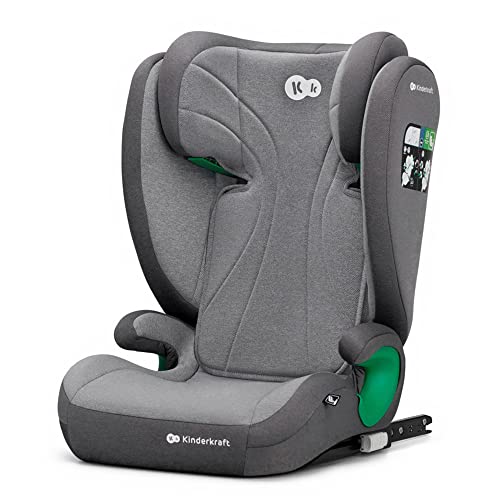
Pushchair Twin
Add a review FollowOverview
-
Founded Date April 5, 1944
-
Sectors Construction / Facilities
-
Posted Jobs 0
-
Viewed 53
Company Description
Five Killer Quora Answers On Pushchair And Pram
Understanding Pushchairs and Prams: A Comprehensive Guide
When it concerns baby mobility, the terms “pushchair” and “Pram (Https://Www.Pushchairsandprams.Uk)” are often used interchangeably. However, they represent unique types of baby providers, each engineered for particular phases of a child’s development and varied adult requirements. This short article explores the important differences in between pushchairs and prams, their functions, types, and factors to consider for brand-new moms and dads.
What is a Pushchair?
A pushchair, commonly called a stroller in some regions, is created for children who can stay up separately. Generally, pushchairs are modern, light-weight, and have a seat that can be reclined for added comfort. They might also feature a five-point harness to ensure the child’s safety while on the go.
Key Features of Pushchairs
- Light-weight Design: Most pushchairs are made from lighter materials, making them easy to steer and transport.
- Adjustable Seats: Many designs provide recline alternatives, dealing with resting or active positions.
- Canopy: Most pushchairs come geared up with a sunshade or canopy to secure the child from sun exposure.
- Storage Space: They generally consist of a lower storage basket, perfect for holding diaper bags or shopping.
Typical Types of Pushchairs
- Standard Pushchairs: Traditional options suitable for kids who can sit separately.
- Umbrella Strollers: Lightweight, compact, and easy to fold; perfect for taking a trip.
- All-Terrain Strollers: Built with bigger wheels for off-road capabilities and smooth rides on varied surfaces.
- Travel Systems: Combines a stroller and a baby safety seat, permitting parents to move their kid effortlessly.
What is a Pram?
A pram, brief for “perambulator,” is mainly designed for babies, normally from birth up until approximately six months. Prams are structured with a flat lying position that supports a newborn’s anatomy, guaranteeing they are cradled correctly.
Key Features of Prams
- Flat Bed Design: Prams have a totally flat bed, which is essential for young babies who need to lie flat for convenience and health.
- Stylish Aesthetics: Many prams boast vintage or traditional designs, frequently seen with luxurious fabrics and appealing surfaces.
- Suspension System: Quality prams typically include a suspension system to offer a smoother trip over rough terrain.
- Extended Canopy: Extended sun defense and rain covers prevail.
Typical Types of Prams
- Classic Prams: Featuring a conventional style, these are often styled to evoke fond memories.
- Convertible Prams: These can rapidly switch from a pram to a pushchair and typically grow with the child.
- Light-weight Prams: More compact than traditional prams, making them much easier to transfer.
Differences Between Pushchairs and Prams
| Feature | Pushchair | Pram |
|---|---|---|
| Usage Case | For children who can sit up | For newborns and infants |
| Design | Upright seat with reclining choice | Flat bed for lying down |
| Weight | Normally lighter | Much heavier due to sturdy construction |
| Compactness | Folds easily and compactly | Might be bulkier, depending on style |
| Age Range | 6 months to 4 years or older | Birth to roughly 6 months |
| Rate Range | More budget-friendly choices available | Often more pricey due to products and style |
Selecting Between a Pushchair and Pram
When selecting in between a pushchair and a pram, a number of aspects call for factor to consider:
- Age of the Child: Newborns need a pram; older babies and toddlers will be more comfortable in a pushchair.
- Lifestyle Needs: Parents who travel frequently might prefer lightweight pushchairs, while those looking for convenience in design might lean toward prams.
- Spending plan: Prams can range from reasonably to high-priced; reliable pushchairs can deal with budget-conscious consumers.
- Storage Space: Consider how easily the selected design can suit your vehicle trunk or home storage.
FAQs
Q1: Can I utilize a pushchair for a newborn baby?
While particular pushchairs are developed with reclining features that might accommodate babies, it is usually recommended to utilize a pram or specially created baby automobile seat for newborns.
Q2: Are travel systems worth the financial investment?
Travel systems can provide benefit by combining a vehicle seat and a stroller. They permit smooth transition from cars and truck to stroller, which lots of parents find indispensable.
Q3: How do I maintain my pushchair or pram?
Routinely clean the fabric, check for mechanical problems, and lubricate the wheels. Ensure to follow specific care guidelines offered by the producer.
Q4: What is the weight limitation for pushchairs and prams?
Weight limitations differ by model: normally, pushchairs accommodate approximately 50 lbs, while prams fit babies up to 30 pounds. Always describe the producer’s guidelines.
Q5: Is it important to have a rain cover for my pushchair or pram?
Yes, a rain cover can safeguard your kid from rain and wind, preserving comfort while avoiding moist clothing.
In summary, pushchairs and prams serve crucial but unique roles in the mobility landscape for moms and dads and caregivers. Choosing the ideal model depends on the child’s age, lifestyle requirements, and family choices. By comprehending the characteristics, benefits, and differences in between pushchairs and prams, parents can make educated decisions that make sure comfort and safety for their kid. Whether strolling through the park or browsing hectic streets, the ideal movement option is out there waiting.


